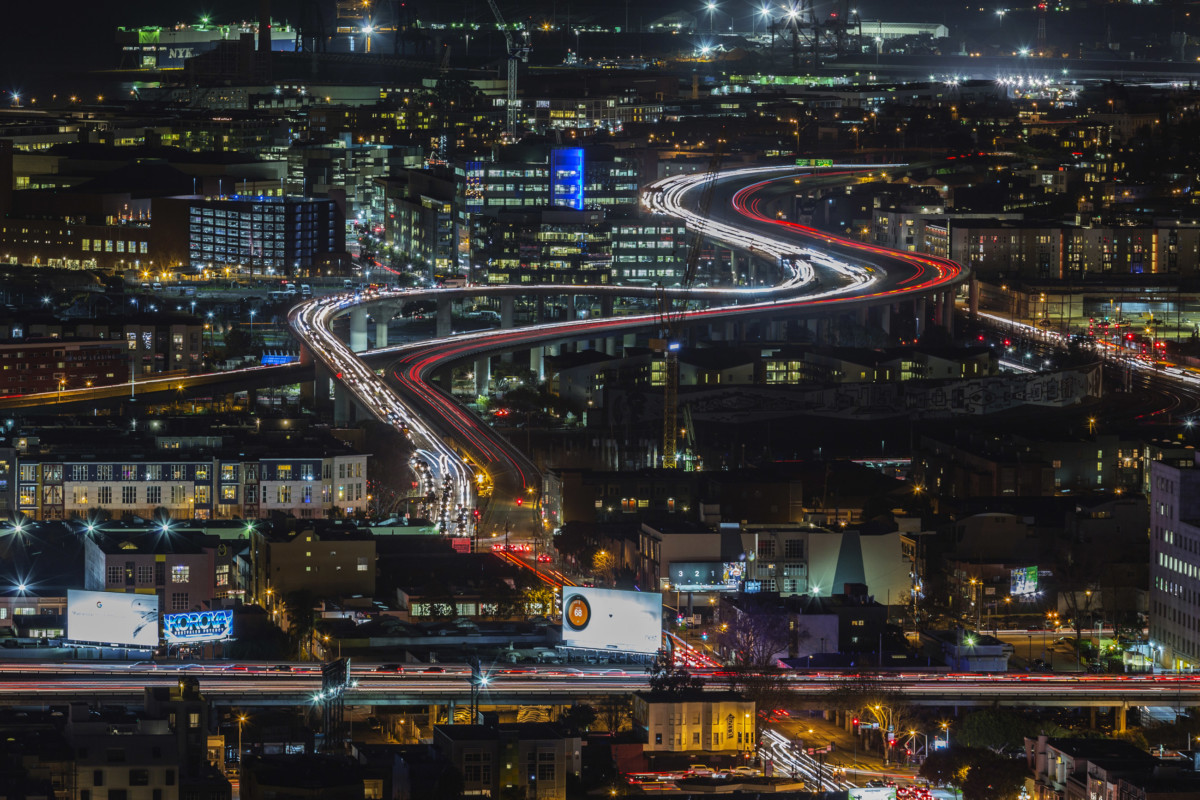As Tech Empire Ravages Environment, Wealth Cannot Protect Silicon Valley From Climate Change
The question here is whether the tech empire’s power, money, governance and green solutions can match the environmental challenge of Silicon Valley’s smoggy sprawl. The challenge includes the need for an end to low-density development (fewer McMansions surrounded by acres of cosmetically sculpted land, more apartment buildings), pollution controls, cleaner cars, inland parks and dealing with water shortages and climate change in one of its most drastic forms – wildfires, according to Pictures of a Gone City: Tech and the Dark Side of Prosperity in the San Francisco Bay Area, by Richard Walker. This book portrays a region where “boom and bust cycles are written into the landscape.”
Tech Empire’s Environmental Degradation
Although air pollution from traffic congestion and sprawl is the most visible environmental problem caused by Silicon Valley, there are others, according to Walker. Groundwater plumes of solvents have moved under working-class housing areas near industrial zones, as Walker explains in a recent email to Truthout. However, these plumes of solvents do not migrate to affluent Palo Alto or Menlo Park. It is the old story of proximity to environmentally hazardous industry causing working-class neighborhoods and communities of color to be far more exposed to pollution than whiter and wealthier areas.
“There are hundreds of sites in Santa Clara County [Silicon Valley] where solvents or other contaminants have been released to shallow soils and/or groundwater,” explains Vanessa De La Piedra, manager of the Santa Clara Valley Water District groundwater management unit, in an email to Truthout. “However, cleanup at these sites is overseen by various regulatory agencies … where these contaminant releases are located near residential areas, regulatory agencies may require additional monitoring and/or mitigation to ensure residents are protected.” She adds that these contaminated sites have limited impact on drinking water aquifers and that contaminant and solvent plumes “are not unique to Silicon Valley and groundwater can be impacted by various land use activities.”
Meanwhile, an area most affected by Silicon Valley’s traffic-caused air pollution is the Central Valley to the east. In addition to an incoming tidal wave of middle- and working-class residents fleeing sky-high housing costs in Silicon Valley, the Central Valley absorbs emissions from mammoth traffic jams to the west. The Bay Area metropolitan region extends more than 150 miles north to south, and 50 miles east to west, “or around 7500 square miles – an area larger than Connecticut and Rhode Island combined,” according to Pictures of a Gone City. Most of this is sprawl, and Walker argues that sprawl pays its real estate investors, delivering profits through property investment and capital accumulation, rather than fulfilling the American suburban dream. He explains that property capital aims to stretch suburbia as far as possible, “because the highest profits come from land value appreciation, not from building houses.”
Sprawl causes traffic jams, and California emits vast amounts of carbon dioxide, second only to Texas in the US, according to Walker. In Silicon Valley, cars and trucks are the dirty mainstay of transportation, and they burn huge quantities of fuel, idling in traffic. Sprawl worsens things by causing long commutes. The bus and rail systems are inadequate in a region where housing “is far too dispersed in the low-rise metropolis.”
Meanwhile, construction in Silicon Valley just continues; the building boom caused by the tech explosion of the 2010s surpassed the dot-com era, Walker writes, which added “about 7.5 million square feet of new office space, the latest wave is depositing a square footage twice that thick.” For Walker, Silicon Valley has been planned sprawl, while its core is an industrial district from Stanford south to San Jose, west to Cupertino – an area composed of “endless drifts of tract housing, windswept deserts of asphalt, replicant shopping centers, and ribbons of freeways and expressways.”
Another problem is tech production pollutants from precious metals, rare earth elements and plastics, though Walker writes that most of that blight is felt elsewhere in the world, due to globally far-flung supply chains. In the past, Silicon Valley used solvents to clean chips, but less so now. These days, soap and water are preferred.
Finally, the waterways are polluted. Walker singles out the San Francisco Bay Delta, although he explains that for purposes of pollution, it is difficult to consider Silicon Valley apart from the larger metropolitan area, because run-off carries gasoline, oil and brake dust from vehicles, soil from construction sites, pesticides and fertilizers from landscaping, and toxins from emissions to the air that settle on the ground. He also cites industrial production and refinery emissions as contributors to water pollution.
According to Pictures of a Gone City, the Bay Area “rolls in its own effluent … beginning with garbage.” Trash was dumped in Guadalupe Canyon, south of San Jose and other places. Bay Area waters are degraded by toxic metals (“washed out from mining and smelting in the nineteenth century”), toxins from past industry (“oil refineries, steel mills, pesticide plants and the U.S. Navy”), current surface run-off, and from ships and boats.
Although e-waste is also a problem, California does have mandated e-waste recycling. “Nine companies in Silicon Valley,” explains Russ Edmondson, public information officer of the California Department of Toxic Substances Control (DTSC), “have notified DTSC of their intent to recycle e-waste on site. Of these nine companies, six reported to DTSC that they shipped electronic devices or e-waste residuals (component parts) offsite in 2017.” Within Silicon Valley, the reported destinations of these residuals were San Jose and Gilroy. So, a good bit of e-waste recycling goes on in Silicon Valley, and some residuals remain there.
But the tech empire’s corporate leaders seem as unconcerned with the pollution the industry produces as with its vulnerability to climate change.
Further Reading:




Geen opmerkingen:
Een reactie posten